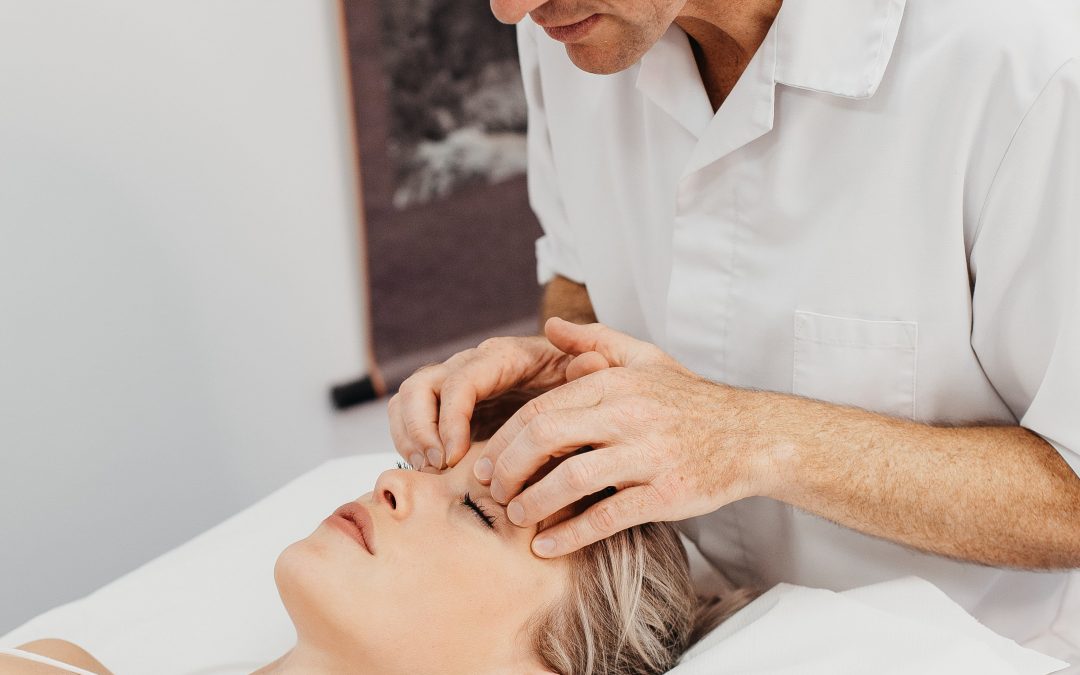Way back in February, when people were only just starting to think about some new virus coming over from China, I went to London for a weekend of workshops on treating headaches. Apart from getting stuck in Gatwick over-night due to fog in Jersey, it was a great weekend.
The course was taught by a researcher from Spain with the fantastic name of Cesar Fernandez-de-las-Penas. Cesar has conducted research and published articles on headaches, and he has written and edited textbooks on a wide range of topics. He has a wealth of research evidence at his fingertips, but the course was very practical as well. So in between lectures on trigger points and pain theory we were going into the next room to practice various techniques on each other. It was nice to meet up with colleagues who also have a special interest in treating headaches, as well as practicing with them!

Headaches are a complicated subject, and getting the correct diagnosis is key. We need to ask the right questions and look for red flags that suggest a serious pathology. But assuming we’ve done that, the approach outlined by Cesar simplified headaches down into a few broad categories with clear directions for treatment.
Tension headaches
Tension headaches are the ones that feel like someone is squeezing your head or tightening a band around it. They often start at the back of the head and may move forward to the forehead. You often feel them on both sides of the head. Cesar recommended focusing on the muscles of the head and neck for people with tension headaches. This can include seeking out trigger points lurking deep in the trapezius or sub-occipital muscles, and calming them down with a variety of hands-on techniques.
Cervicogenic headaches

Headaches that come on when you turn your head, or position your neck in a certain way are termed “cervicogenic”. The focus of treatment should be aimed at the discs and the facet joints of the neck. Cesar spent some time looking at assessment and treatment of these joints. These hands-on techniques should lay the foundation for further work on posture, movement and exercise.
Migraines
The typical migraine feels like a pulsing, throbbing pain on one side of the head. However migraine can take many different forms, and it can mimic a variety of other conditions. Migraine is a complicated, brain-based disorder influenced by genetics, hormonal cycles and lifestyle. Despite this, there are still a number of avenues that an osteopath can explore to help someone with migraines.

Cesar drew my attention to the influence of certain muscles at the front of the neck, and how these can reproduce pain around the eye, which is typical of migraine. Some of his techniques focused on ganglia of the sympathetic nervous system in the neck, which influence blood flow in the capillaries of the head. However, I felt he didn’t really look at lifestyle when it comes to managing migraines. There are five important lifestyle factors that people can adjust to reduce their frequency of migraine. Please read my blog on the SEEDS approach to learn more about these factors.
How about you?
I found this a worthwhile series of workshops, which broadened the techniques I have available to treat headaches. There were several topics that did not receive the attention they deserve, but headaches is a large subject and cannot be covered in one weekend. This is why I find treating headaches so fascinating! Did any of these descriptions match your headache? Or is it different pattern entirely? If you would like help or advice managing your headaches, please call to make an appointment on 520714.




Recent Comments